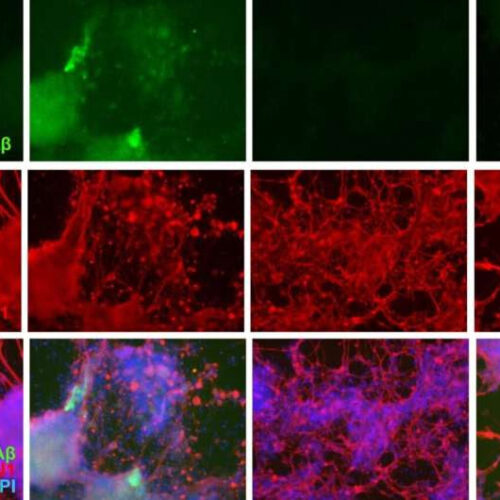by British Medical Journal Credit: Unsplash/CC0 Public Domain Poor quality sleep, including too much or too little shuteye, daytime sleepiness, and snoring, may be linked to a heightened risk of developing irreversible sight loss (glaucoma), suggests a large UK Biobank study published in the open access journal BMJ Open. The findings underscore the need for sleep...
Morning blue light treatment improves sleep in patients with PTSD
by David Bruzzese, University of Arizona Credit: CC0 Public Domain People with post-traumatic stress disorder (PTSD) experienced better sleep, a reduction in the severity of PTSD symptoms and more effective treatments after exposure to blue light therapy, according to a new study conducted by researchers in the University of Arizona College of Medicine—Tucson’s Department of...
Afternoon or evening physical activity is linked to reduced insulin resistance, better control of blood sugar
by Diabetologia Credit: CC0 Public Domain A new study published in Diabetologia finds that afternoon or evening physical activity is associated with reduced insulin resistance (and thus better blood sugar control) when compared with an even distribution of physical activity through the day. Morning physical activity offered no advantages, concluded the study by Dr. Jeroen van der...
Researchers discover modifications to myelin play vital role in learning
by CU Anschutz Medical Campus Credit: Pixabay/CC0 Public Domain Researchers from the University of Colorado Anschutz Medical Campus have discovered a new way the brain processes and communicates information that could lead to improved learning in those suffering neurological disorders or recovering from brain injuries. The study was published in Nature Neuroscience. Researchers focused on changes...
New optimism on myelodysplastic syndromes
by Sylvester Comprehensive Cancer Center Credit: Pixabay/CC0 Public Domain Physician scientists at Sylvester Comprehensive Cancer Center at the University of Miami Miller School of Medicine have published a review in the Journal of the American Medical Association that clarifies current treatment approaches for myelodysplastic syndromes (MDS), which are rare and often deadly bone marrow cancers. For years,...
Glial cells eating synapses may enhance learning and memory
by Tohoku University A 3D reconstructed synaptic structure capturing glial phagocytosis. A represents part of a 3D reconstructed Purkinje cell dendrite (yellow). Multiple spines are found at a high density along the dendrite. In many of the spines, aberrant protrusions were found (protrusions from the spine are colored in red). These protrusions were observed at...
Getting closer to understanding sudden cardiac death
by University of Basel Credit: Pixabay/CC0 Public Domain The heart disease arrhythmogenic cardiomyopathy can lead to sudden death, particularly affecting young athletes. Researchers at the University of Basel have now genetically modified mice, which develop a similar disease to that found in humans. This allowed the team to identify previously unknown mechanisms and potential therapeutic...
Green tea and resveratrol reduce Alzheimer’s plaques in lab tests
by Taylor McNeil, Tufts University “In the case of these compounds that passed the screening, they had virtually no plaques visible after about a week,” says Dana Cairns. This image shows effects of resveratrol compared to control. Credit: Dana Cairns Alzheimer’s disease is the sixth leading cause of death in the United States, affecting more...
Eli Lilly plans to make tirzepatide next big thing as pharma experiences ‘unprecedented’ demand for the drug
Paul Schloesser Associate Editor Eli Lilly has been pushing forward on its plans to expand tirzepatide into a megablockbuster, and while the Big Pharma is touting an increase in sales compared to previous quarters, it is trimming down its year-end guidance. The Big Pharma reported $6.94 billion in Q3 revenue, better than expected compared to...
Four Commonly Abused Drugs Linked With Atrial Fibrillation
Will Pass October 26, 2022 Cocaine, methamphetamine, opioids, and cannabis may independently increase risk of atrial fibrillation (AFib), based on data from almost 24 million people. While more work is needed to uncover causal links, physicians should be aware that these commonly abused substances could be driving new cases of AFib, reported investigators from the University of California,...








